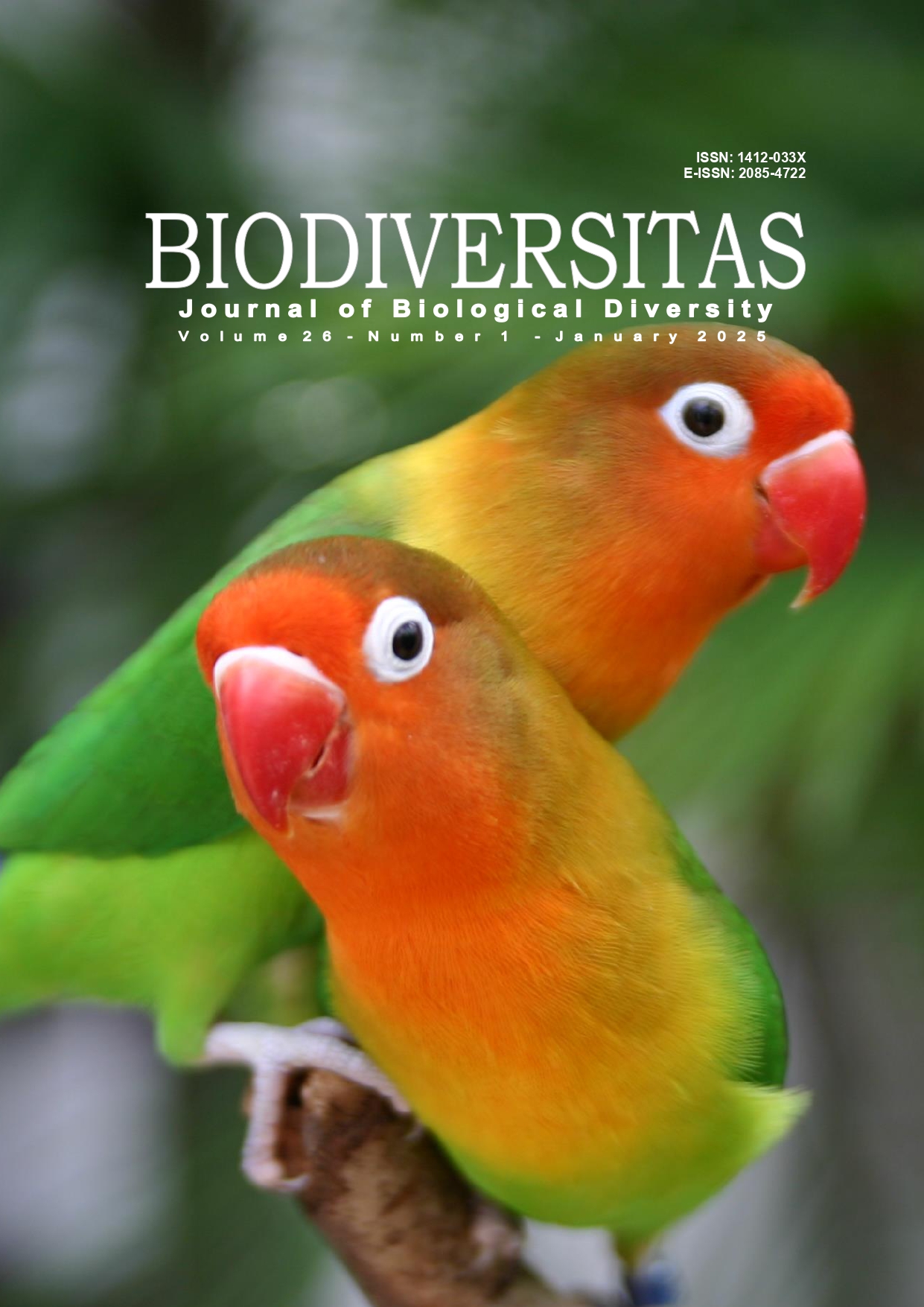Development and validation of novel microsatellite markers of a potentially invasive fern Dicranopteris linearis var. linearis
##plugins.themes.bootstrap3.article.main##
Abstract
Abstract. Kamarudin NB, Aziz MA, Othman AS, Rosazlina R. 2025. Development and validation of novel microsatellite markers of a potentially invasive fern Dicranopteris linearis var. linearis. Biodiversitas 26: 46-54. Dicranopteris linearis is a forked fern native to Peninsular Malaysia. Recently, it has been recognized for its invasive potential in the ecosystem of Peninsular Malaysia due to its abundance, rapid spread, aggressive growth pattern, and competition for resources available to other native plants and crops. Despite its abundance and invasive potential, little is known about the potential domination mechanism and influence of genetic diversity on its establishment. Addressing this knowledge gap requires population genetic analysis, yet the fern has limited genomic information and molecular markers available. Hence, we aimed to develop novel microsatellite markers from D. linearis var. linearis using whole genome sequencing (WGS) data for preliminary population genetic analysis. Our analysis identified 879 simple sequence repeats (SSRs), predominantly trinucleotide repeats (AAC/GTT). Out of 462 primer pairs designed, 20 were randomly selected for validation, leading to eight markers verified as polymorphic across 30 tested individuals from the Batu Ferringhi population. These markers showed a moderate level of genetic variation (Na= 3.5, He= 0.4884) between individuals. Furthermore, these markers achieved successful amplification in six related species with transferability rates between 75% and 100%. The SSR markers developed in this study can be applied for future population-level studies to ascertain factors that may be driving diversity that enables the survival, adaption, and domination of the potentially invasive fern and its related species in the ecosystem of Peninsular Malaysia.
##plugins.themes.bootstrap3.article.details##
Most read articles by the same author(s)
- JASIM HAIDER MAHMOD JASIM, AHMAD SOFIMAN OTHMAN, FARAH ALIA NORDIN, NURUL SHAKINA MOHD TALKAH, High-quality genomic DNA extraction methods of Yellow Spathoglottis Blume complex for next-generation sequencing , Biodiversitas Journal of Biological Diversity: Vol. 25 No. 2 (2024)


 https://orcid.org/0000-0001-7646-0060
https://orcid.org/0000-0001-7646-0060